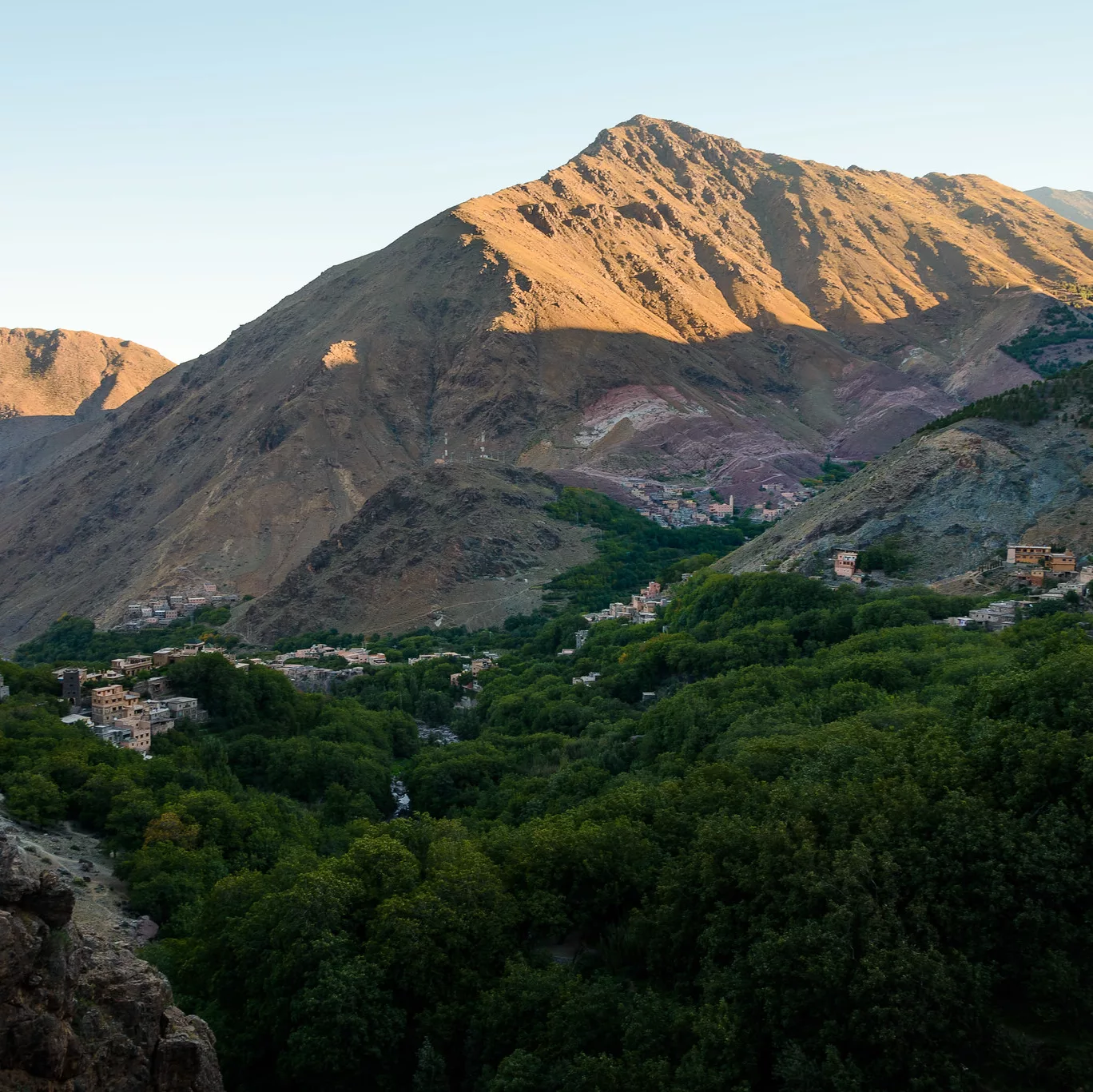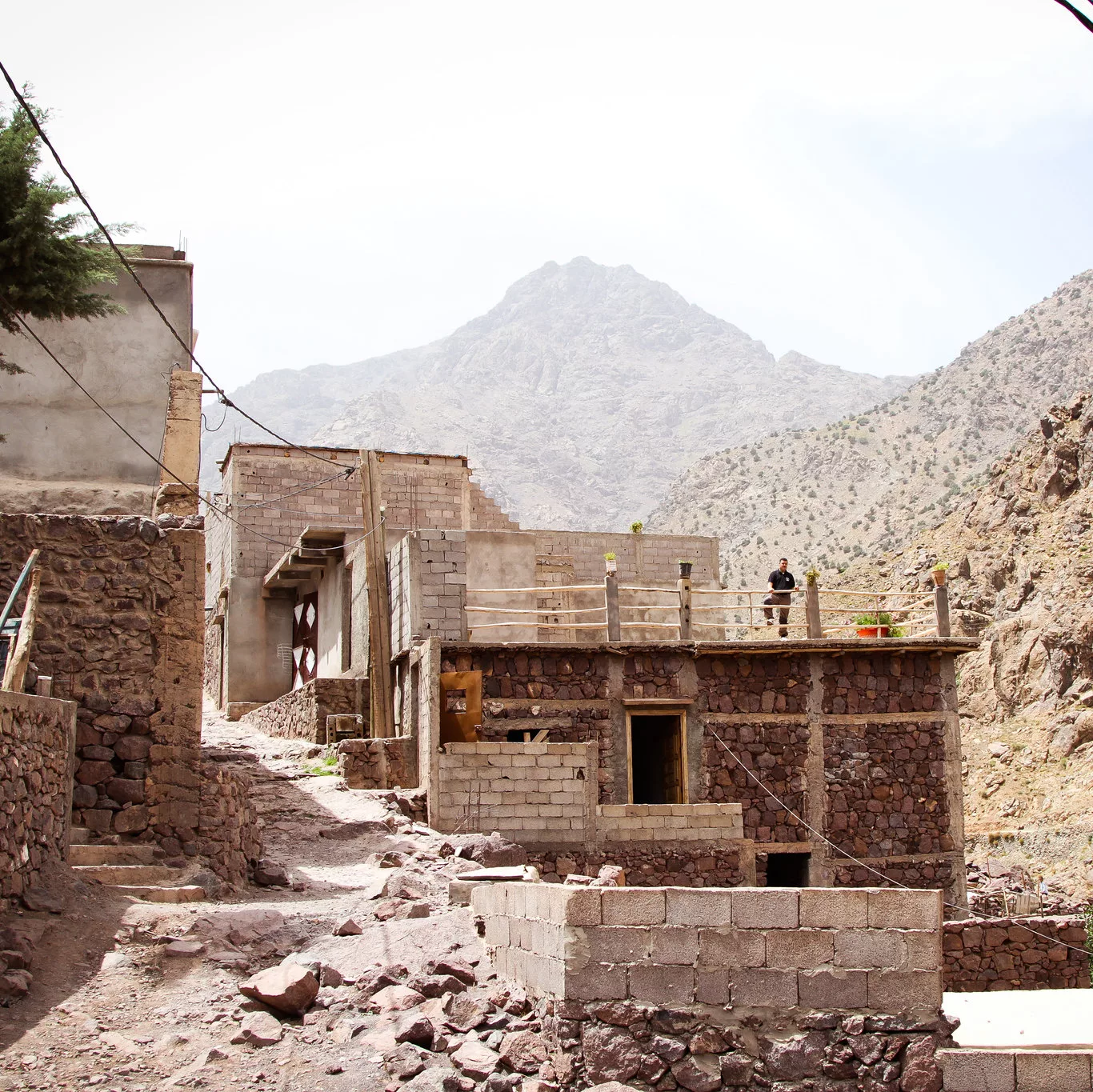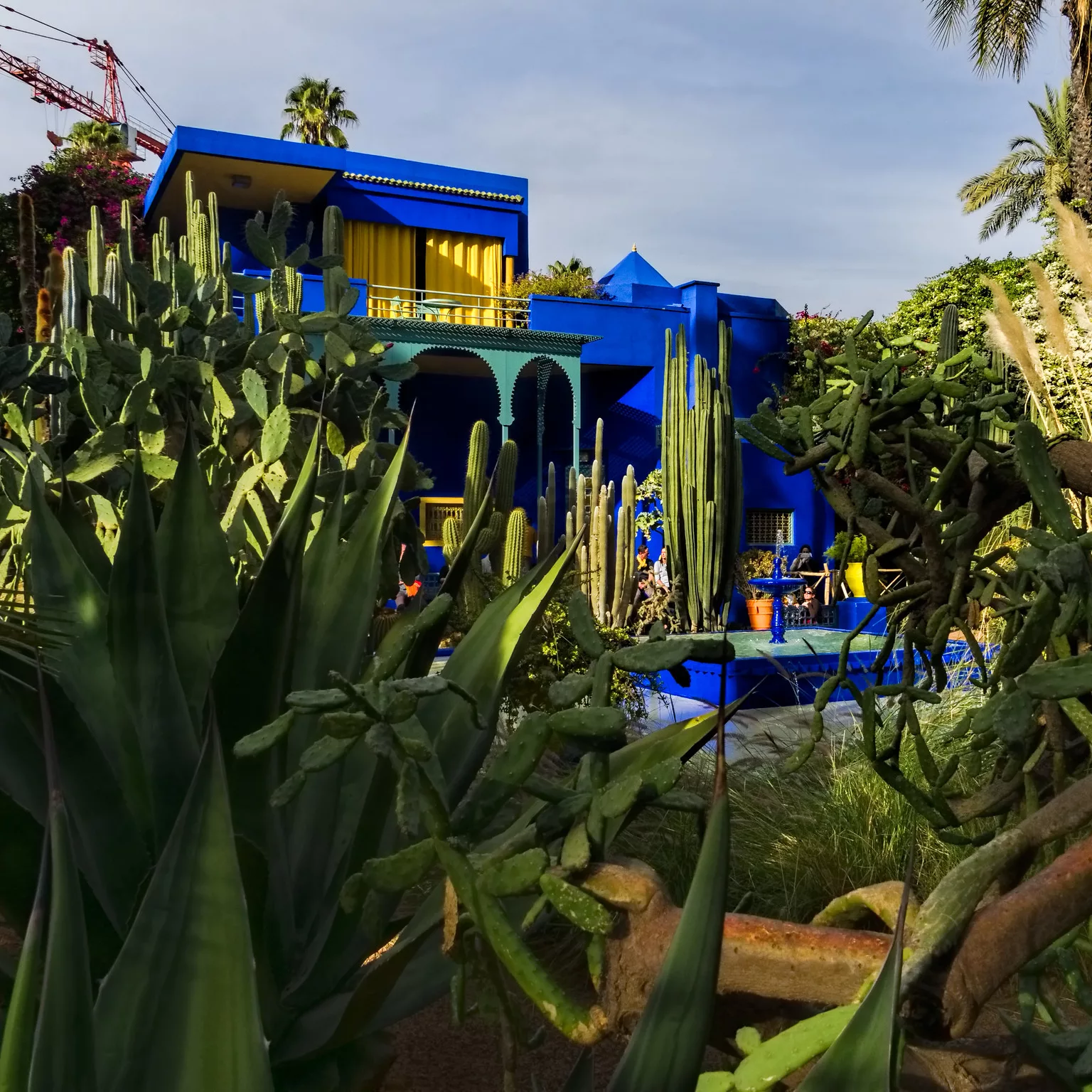
Looking for a unique and exciting adventure? Look no further than Morocco. With its rich culture, stunning architecture, and breathtaking landscapes, Morocco is a must-visit destination for any traveller. With this 10-day itinerary that takes you from the bustling city of Marrakesh to the tranquil mountains of Imlil, the coastal town of Essaouira, the ancient village of Aït Benhaddou, and the desert at Erg Chigaga, you’ll get to thoroughly experience the best that this incredible country has to offer. Embark with me on this once-in-a-lifetime journey!
Day 1 and 2 – Marrakesh
Exploring the old Medina in 2 days
There is nothing quite like Marrakesh in the morning sunlight! The captivating fragrances and flavors that hit you as soon as you set foot in The country’s most sumptuous city are just one of the enchantments that your trip can hold for you, and beginning your journey here is the perfect way of starting your stay in Morocco.
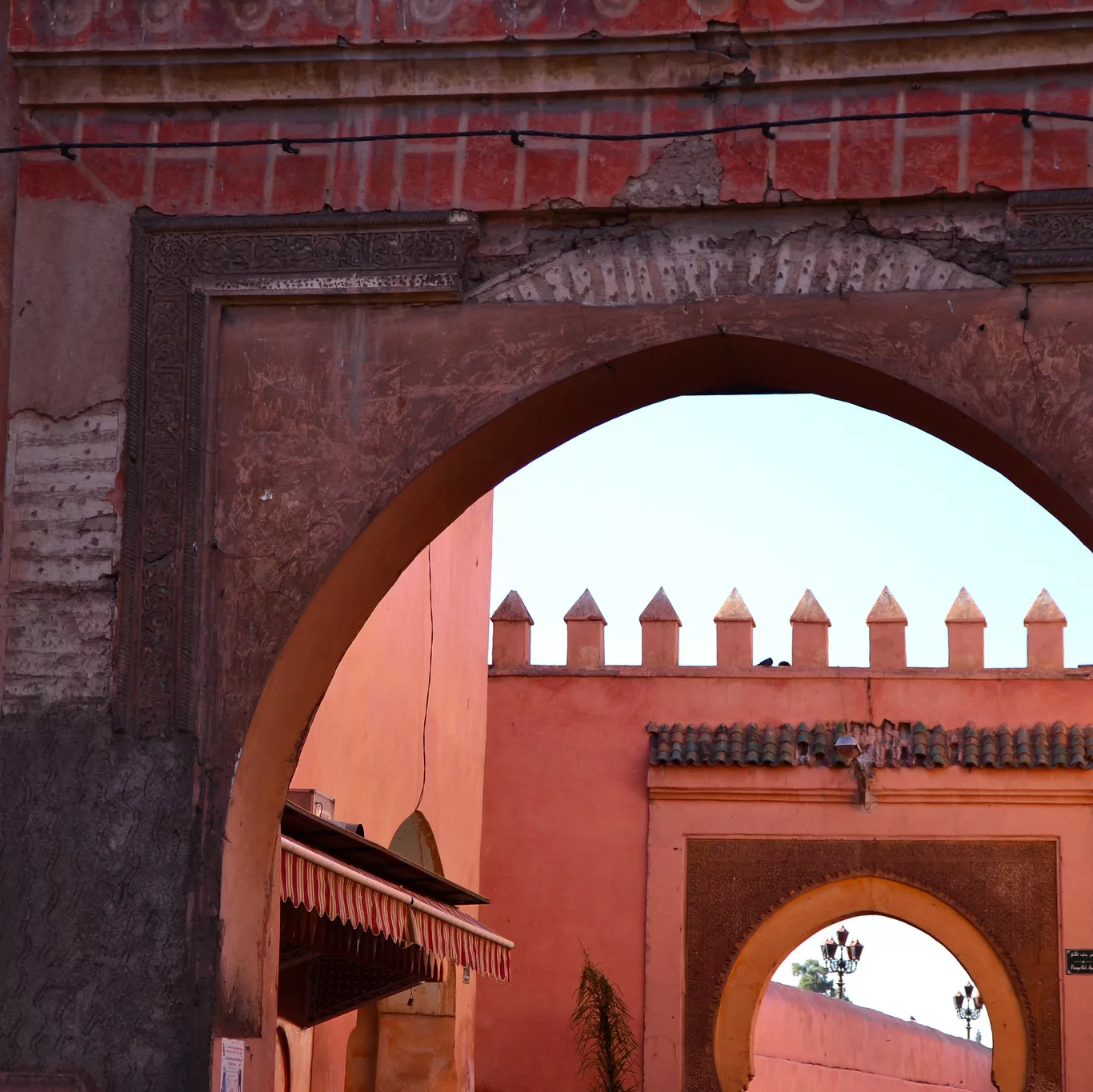
Image by Sammy Six via Flickr
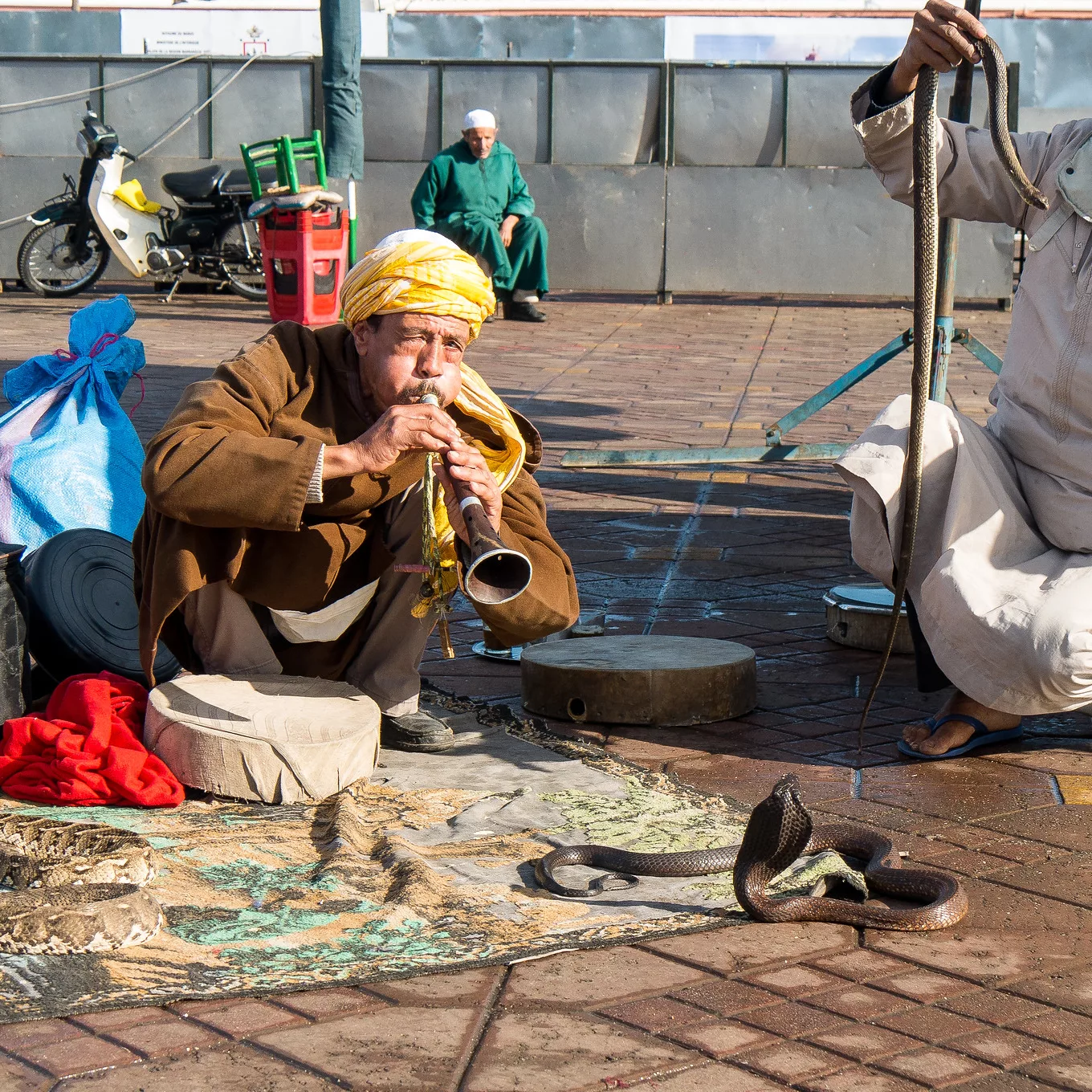
Image by Jay Galvin via Flickr
Must-sees in Marrakesh
Exploring the Medina and Djemaa El Fna
The Medina of Marrakesh has to be one of the most popular destinations in North Africa, and there’s a reason for that. Head to Djemaa El Fna, and you’ll see how easy it is to succumb to its magic. The area around the square may appear deceptively peaceful; it is anything but it. The party always seems to continue in this place of unique cultural exchange. You can easily spend more than 3 hours in the square. Although it is usually suggested you bring some money (because the market sells some truly lovely items), one of the best ways to enjoy the hustle and bustle of Djemaa El Fna is by sitting at a rooftop café and sipping a cold drink.
Koutoubia Mosque and the souks
Walk around the nearby Koutoubia Mosque and witness the grandeur of its elegance. Made out of stunning pinkish-red stone and adorned with contrasting green decorations, it has to be the most splendid mosque in Morocco.
End your first day by wandering through the souks of Marrakesh. The bustling atmosphere inhabiting them, and the distinct smell of sandalwood and jasmine enveloping you, makes for one of the most unique shopping experiences in the world. Indeed, the busy undertone, the bargains, the thrill of haggling, and the assault on the senses are often a big part of why people travel to Morocco’s Red City. While Souk Semmarine is a well know market selling each and every thing you could think of, some have their specialty. Souk Fekharine has the most fantastic pottery and is a great place to find your next tagine! (yeah!) Go to Souk Attarine and take in the vibrant colors of the market’s spices. Feeling some blisters on your feet after hours of walking the medina? Make a worthy detour at Souf Smata to find the perfect fit.
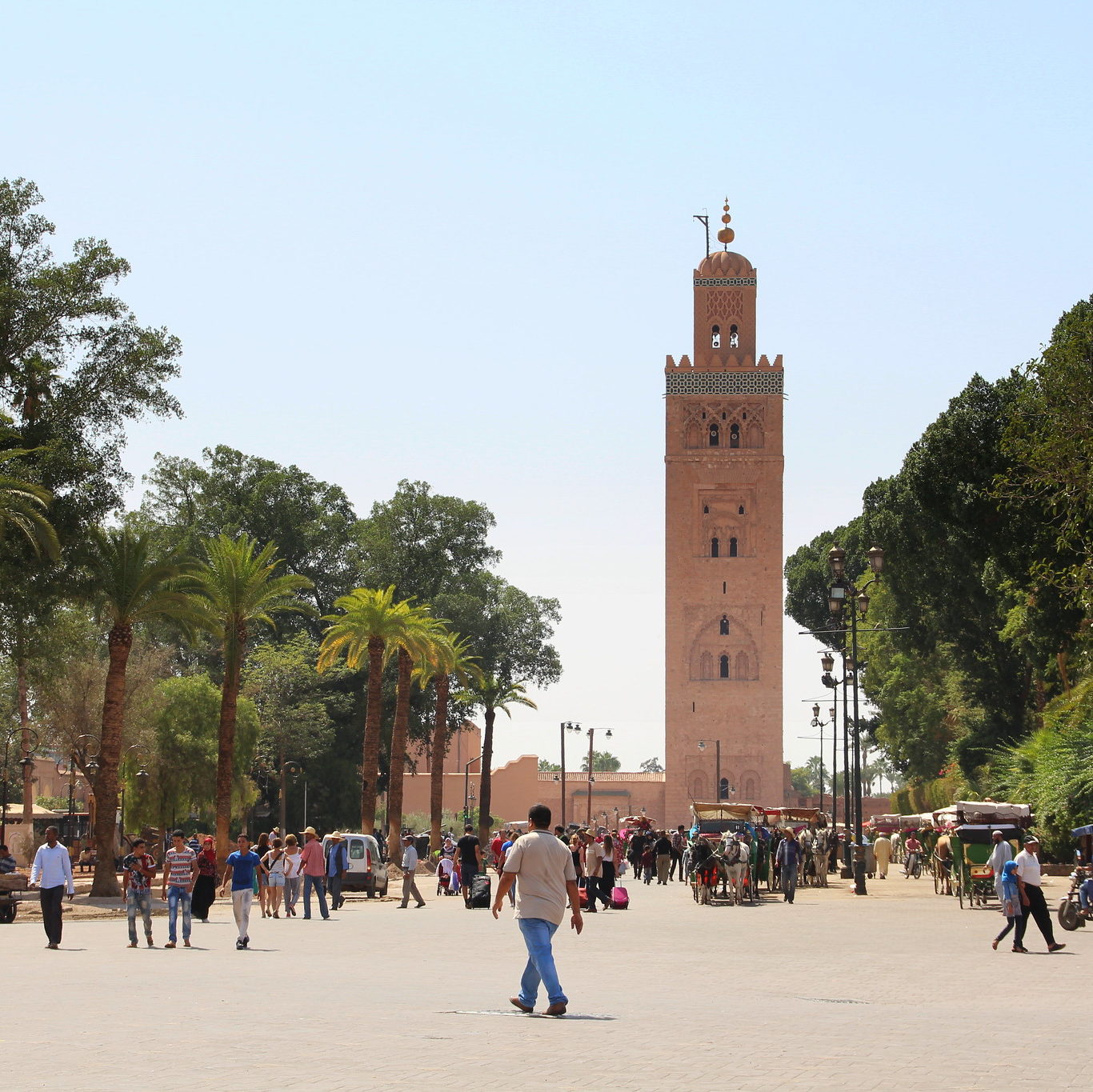
Image by Just Booked A Trip via Flickr
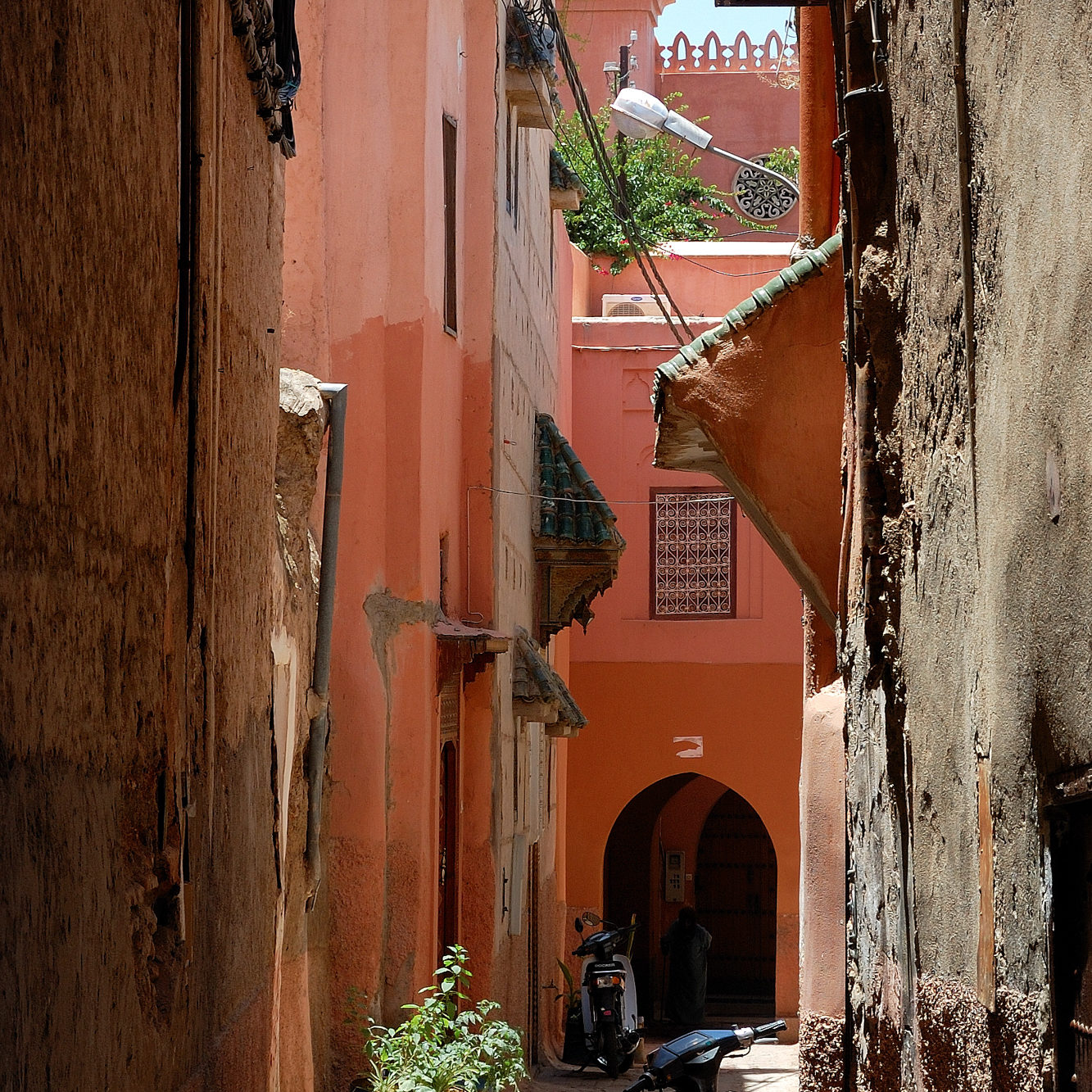
Image by Ania via Flickr
Saâdian Tombs and the Ben Youssef Madrasa
Begin your second day by entering one of Marrakech’s most beautiful and important historical monuments: the Ben Youssef Madrasa. Just a few steps from Djemaa El Fna, this gem of Moroccan architecture takes your breath and keeps it forever. Full of small details, the gorgeous madrasa has a lot to explore. I recommend you spend at least 2 hours here. Afterward, peak at the Saâdian Tombs, just beside the Royal Palace of Marrakesh. The royal tombs and rooms have been completely restored, making it worth the small fee to visit. Finally, end your time in Marrakesh at André Heller’s ANIMA. Mixing art and botanical on an Atlas mountains backdrop, the gardens are a peaceful respite from the energetic city.
Pro tip
Avoid the Quartier des Tanneurs if you can. The harassment there can be particularly intense.
Where to eat in Marrakesh
Try the Bazaar Café. The place has a small rooftop above the Medina and is excellent for enjoying a relaxed atmosphere, sipping a cocktail at sunset, and viewing the faraway scener.
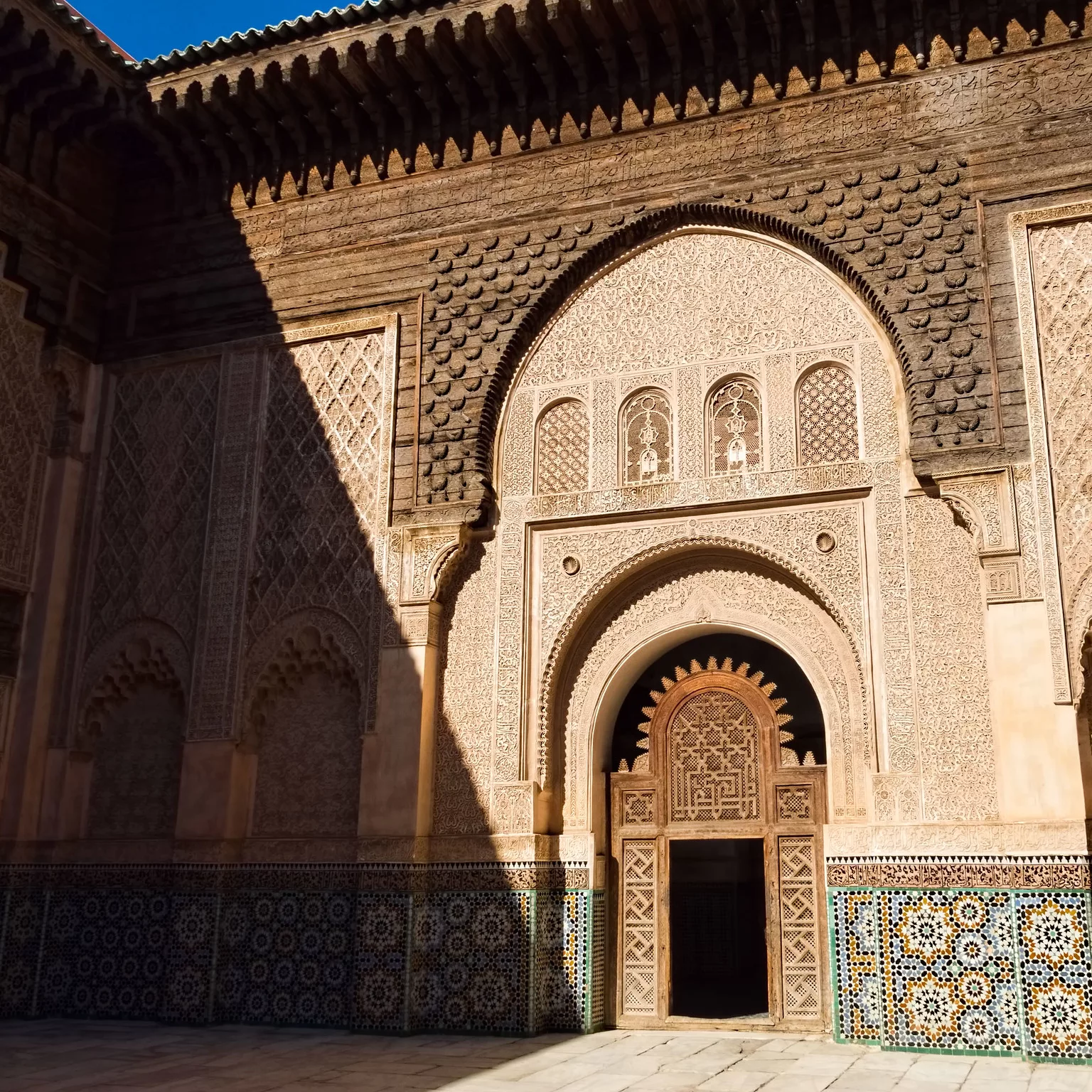
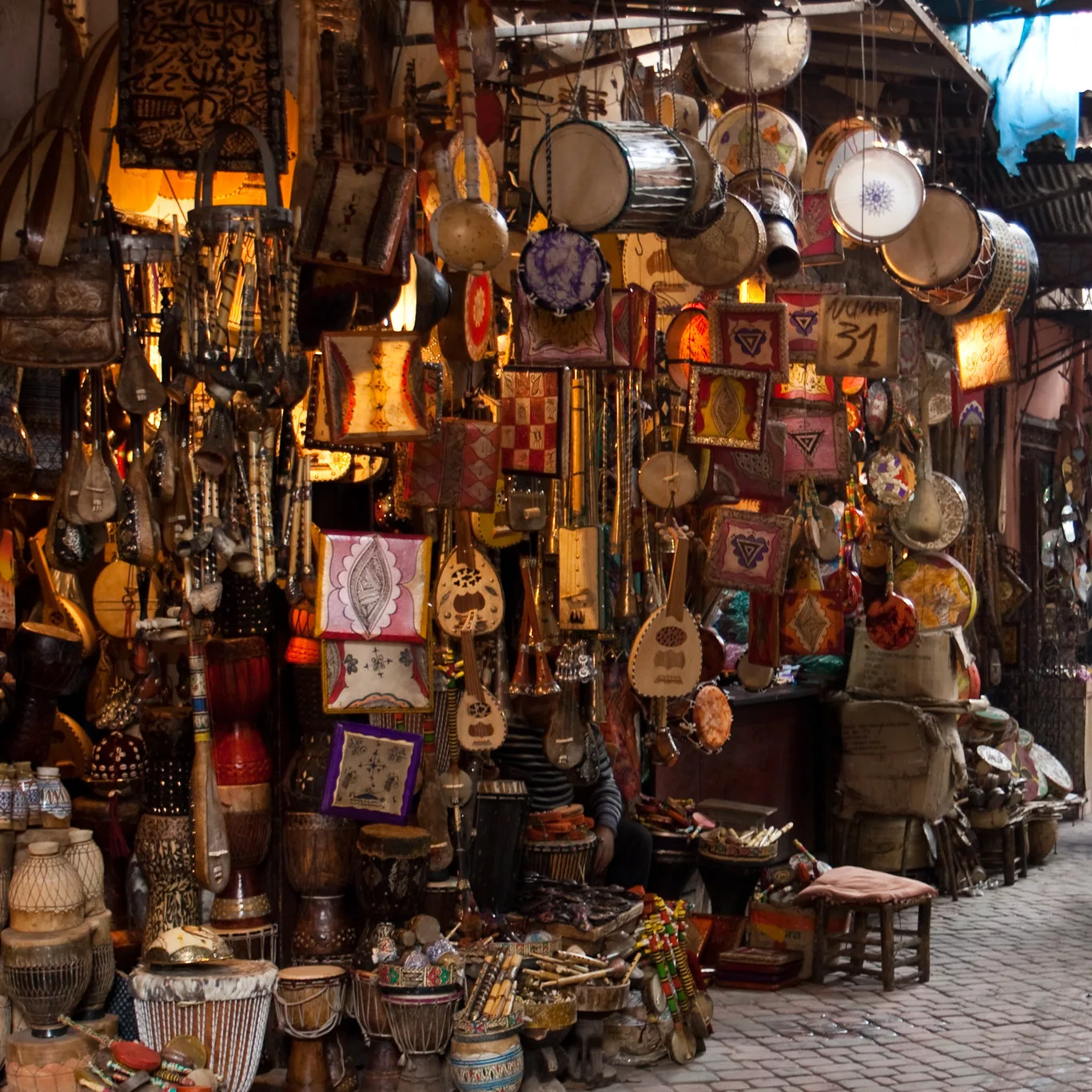
Where to stay in Marrakesh
It’s hard not to suggest to go at the Riad BE Marrakech. (It’s one of the best riads in Marrakesh!) Even more beautiful than in the pictures, this boutique hotel offers an excellent breakfast for a quick bite before heading to your city explorations. The staff, friendly and approachable, provides a rare service level. Even though I couldn’t stay in this room, the “Room Ard” is an absolute dream to look at.
| TYPE | ACCOMMODATION | RATING | PRICE |
| Riad | Riad BE Marrakesh | 4.5 / 5 | From € 150 / night |
Day 3 – Discover the Atlas mountains in Imlil
Grand Tax Ride from Marrakesh to Imlil: Takes 2,5h et costs 50 dhs/person
Unlike Marrakesh and its picture-perfect desert palmeraie, Imlil inspires another kind of adventure altogether: prodigious high-altitude trekking. The little mountainside town (1,740 m above sea level) is, in fact, the most popular trailhead to climb the nearby Jebel Toubkal.
I’d recommend staying for the night as you’ll be rewarded with the clearest night sky view on this side of the Atlas Mountains.
Where is Imlil?
Located amid the snowcapped peaks, Imlil is some 60 km south of Marrakesh.
How to get to Imlil
You can usually reach Imlil by Grand taxi from Marrakech. If you have a hard time finding someone to bring you there, try taking a Grand Taxi to Asni instead and catch a ride to Imlil from there. If you head there with a rental car, make sure to fuel up before leaving Marrakesh. Gas stations on the way are scarce on the way to the Atlas Mountains.
Things to do in Imilil
If you’re an adventure seeker, the multi-day trek around Jebel Toubkal is one of the great hikes North of the Sahara. All non-locals must theoretically be accompanied by a local to hike Jebel Toubkal. You can find a guide at the Bureau des Guides d’Imlil (Imlil Guides Office). One of the best places to go on an excursion if you’ve only got a day in the Atlas Mountains is the 3km path from Imlil to Aroumd. The trail leads you through a gushing spring, unspoiled waterfalls, and the shade of fruit tree plantations.
Where to eat in Marrakesh
While in Imlil, you have to have a meal of fresh bread, cheese and olives, with some Moroccan mint tea. It’s the nicest way to experience a day in the sun in the Berber village. Be sure to visit “Chez les Berbères”; their terrasse has a fantastic view of the gorge below.
Where to stay in Marrakesh
| TYPE | ACCOMMODATION | RATING | PRICE |
| Luxury | Kasbah Tamadot | 4.5 / 5 | From € 500 / night |
| Riad | Dar Imlil | 4.5 / 5 | From € 72 / night |
Day 4 and 5 – Essaouira
Leave lively Marrakesh for the sandy shores of Essaouira. Situated on the Atlantic coast, the port city provides a calmer pace to travelers while maintaining an enticing atmosphere. The white sea bathing city isn’t what we usually imagine when imagining Morocco, making it even more exciting. Feel the breeze in your hair while you meander its wonderfully compact UNESCO World Heritage medina.
Bus Ride from Marrakesh to Essaouira: Takes 3,5 h et costs 80 dhs/person
Must-sees in Essaouira
The medina of Essaouira and Skala de la Kasbah
It’s impossible not to feel the whimsical magic of Essaouira while walking its whitewashed streets and being close to such lovely architecture. Cozily concealed behind ochre ramparts, the old city displays its history as an old anchorage port for European pirates vibrantly. You don’t want to miss a stroll among the medina’s various markets to look at the work of its renowned artisans.
One of the must-visit attractions in Essaouira is the picturesque Skala de la Kasbah. If you’re going in the morning, an ideal place to admire the view of the rising sunlight on the ocean is the north end of the ramparts. (near Bab Ljhad) The sight of the Atlantic waves crashing on the rocks below is truly breathtaking.
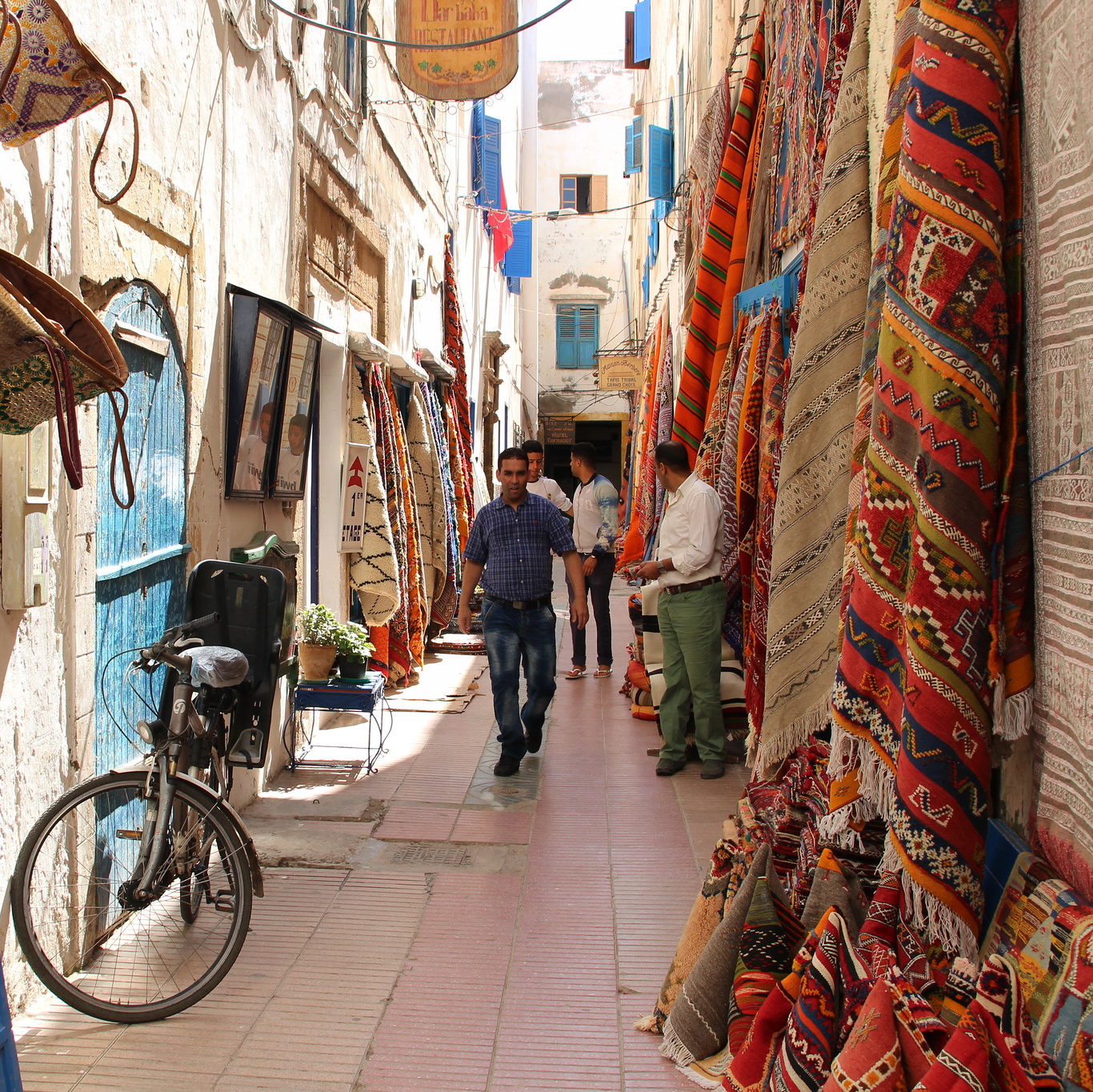
Image by Just Booked A Trip via Flickr
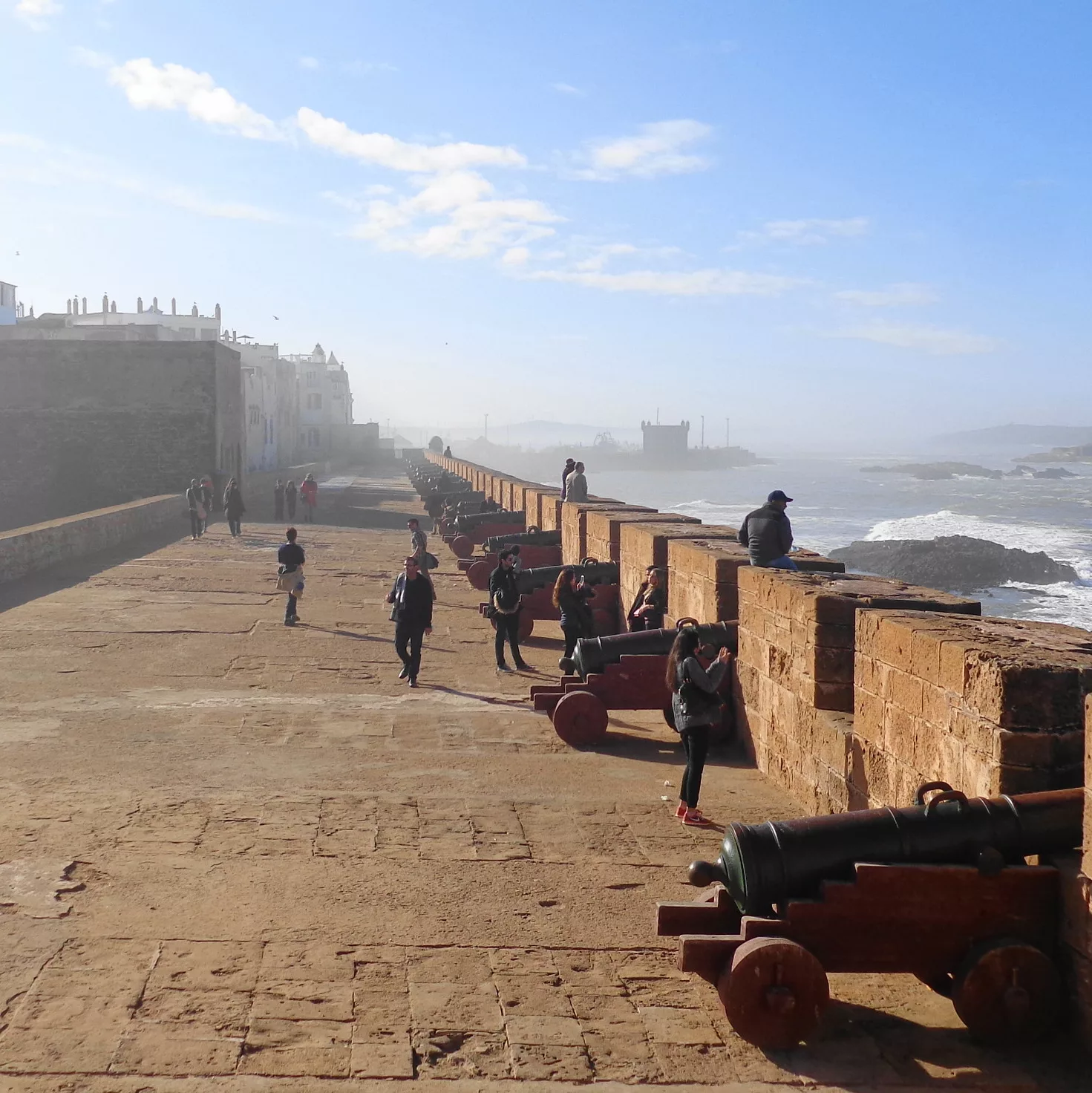
Living the experience of Essaouira’s Old Fishing Port
There is no better place on earth to observe the charms of an old-times fishing port than in this windy Moroccan city. You can easily stay spellbound here, awed by the authenticity of the harbor: the work of the fishermen, the saltwater smell, and the sound of the humming fish market are a marvel to behold. Between the hordes of seagulls and cats, you’ll find one of the best fresh catches on this side of Africa.
Where to eat in Essaouira
A great place to taste the local cuisine is Restaurant Sayef. This Moroccan has mouth-watering tuna steaks that you’ll remember all the way home.
Where to stay in Essaouira
| TYPE | ACCOMMODATION | RATING | PRICE |
| Riad | Riad Chbanate | 5 / 5 | From € 118 / night |
| Riad | Ryad Watier | 5 / 5 | From € 141 / night |

Image by Patrick Nouhailler via Flickr
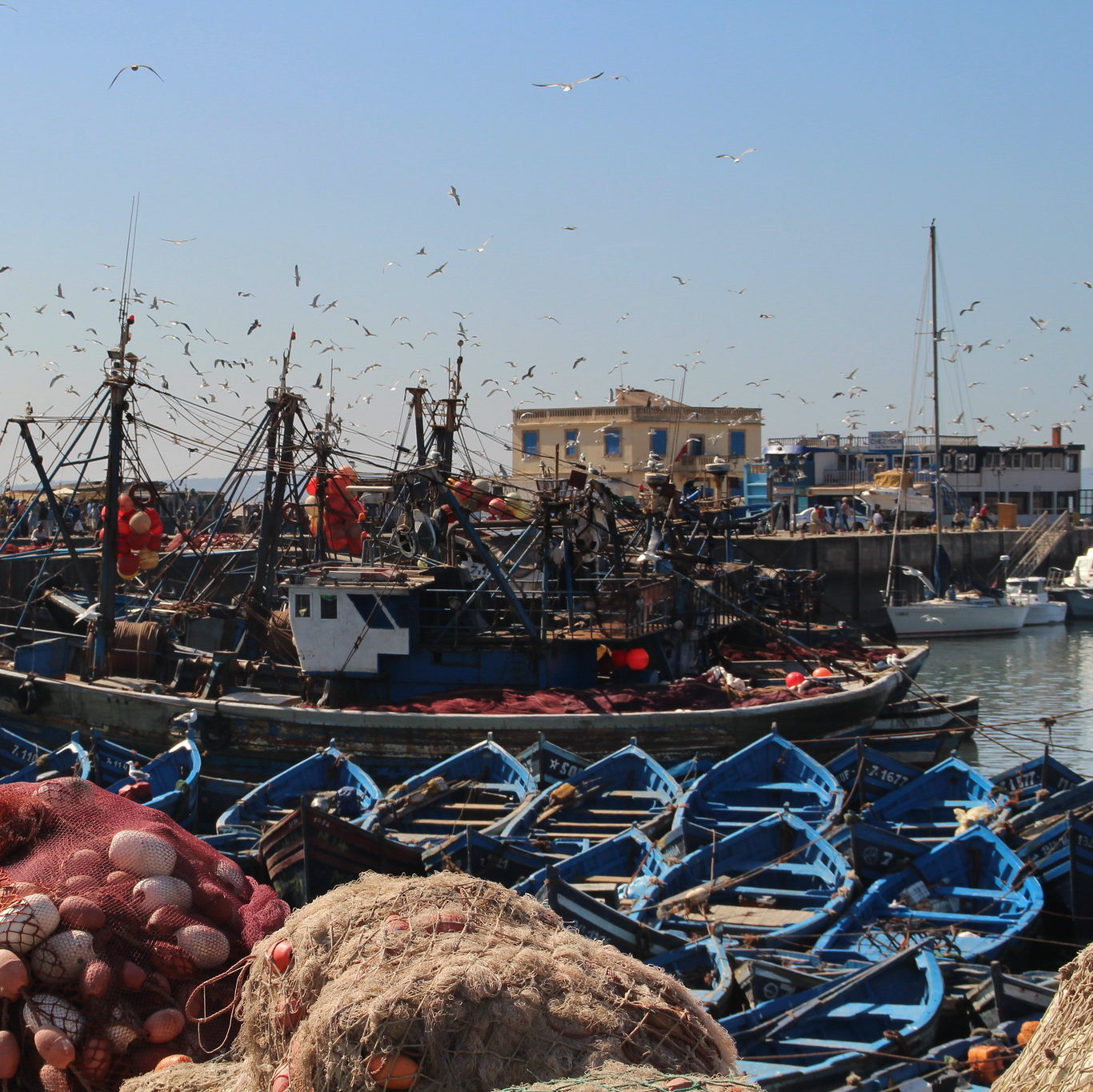
Image by Just Booked A Trip via Flickr
Day 6 – Ouarzazate and Aït Benhaddou
Grand Taxi from Essaouira to Ouarzazate (including a transfer in Marrakesh): Takes 7 h et costs 225 dhs/person
The road from Essaouira to Ouarzazate is one of change. After leaving the coastal air of the port city and passing the occasional goats perched on Morocco’s endemic argan trees, you’ll eventually reach the awe-inspiring kasbahs of Ouarzazate. The city is the gateway to the Moroccan desert and the glorious Aït Benhaddou.
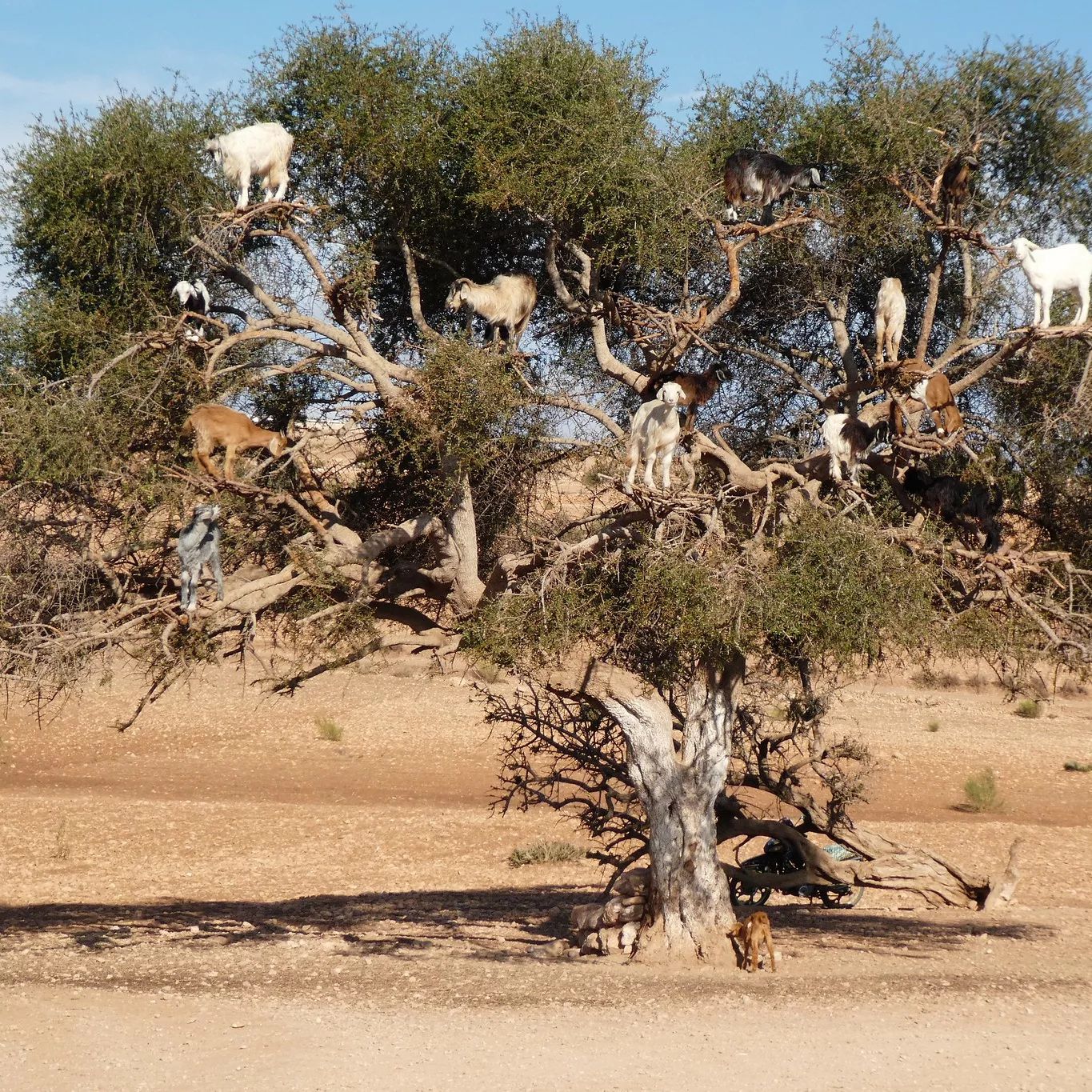

Image by Silke Baron via Flickr
Things to do in Ouarzazate
Visiting Aït Benhaddou
Ksar of Aït Benhaddou is one of the most scenic sights in the country. This magical fortified village is only accessible by crossing a desert spring but worry. You can cross the river on a donkey if you don’t feel like getting your feet wet! Explore the ancient Ksar to discover its terraced streets and small souks. Just because the town is small, it doesn’t mean there isn’t anything to see. I recommend allowing 1 to 2 hours here. The most impressive point of view is definitely on the other side of the riverbed. Aït Benhaddou is unquestionably a piece of history on the road to the desert.
It is also possible to visit the location simply as a day trip from Marrakesh!
Atlas Film Studio and the Taourirt Kasbah
If you’re a movie fan, this place will be more fun than a barrel full of monkeys. The enormous sets of Atlas Film Studio offer a unique opportunity to walk through the locations of some iconic Hollywood movies. (Gladiator, Game of Thrones, and The Mummy, among other films, were realized here!) Orlando’s Universal Studios should take note!
Another notable site in Ouarzazate is the Taourirt Kasbah. Despite its simplicity, I found the building’s Berber architecture stunning in design and structure.
Where to stay in Ouarzazate
| TYPE | ACCOMMODATION | RATING | PRICE |
| Luxury | Le Berbère Palace | 4 / 5 | From € 326 / night |
| Riad | L’Ma Lodge | 5 / 5 | From € 110 / night |
Where to eat in Ouarzazate
Be sure to visit La Rose Des Sables Restaurant Pizzeria while in Ouarzazate. You’ll find on their menu such things as Moroccan soup, tagine and Berber Pizza!
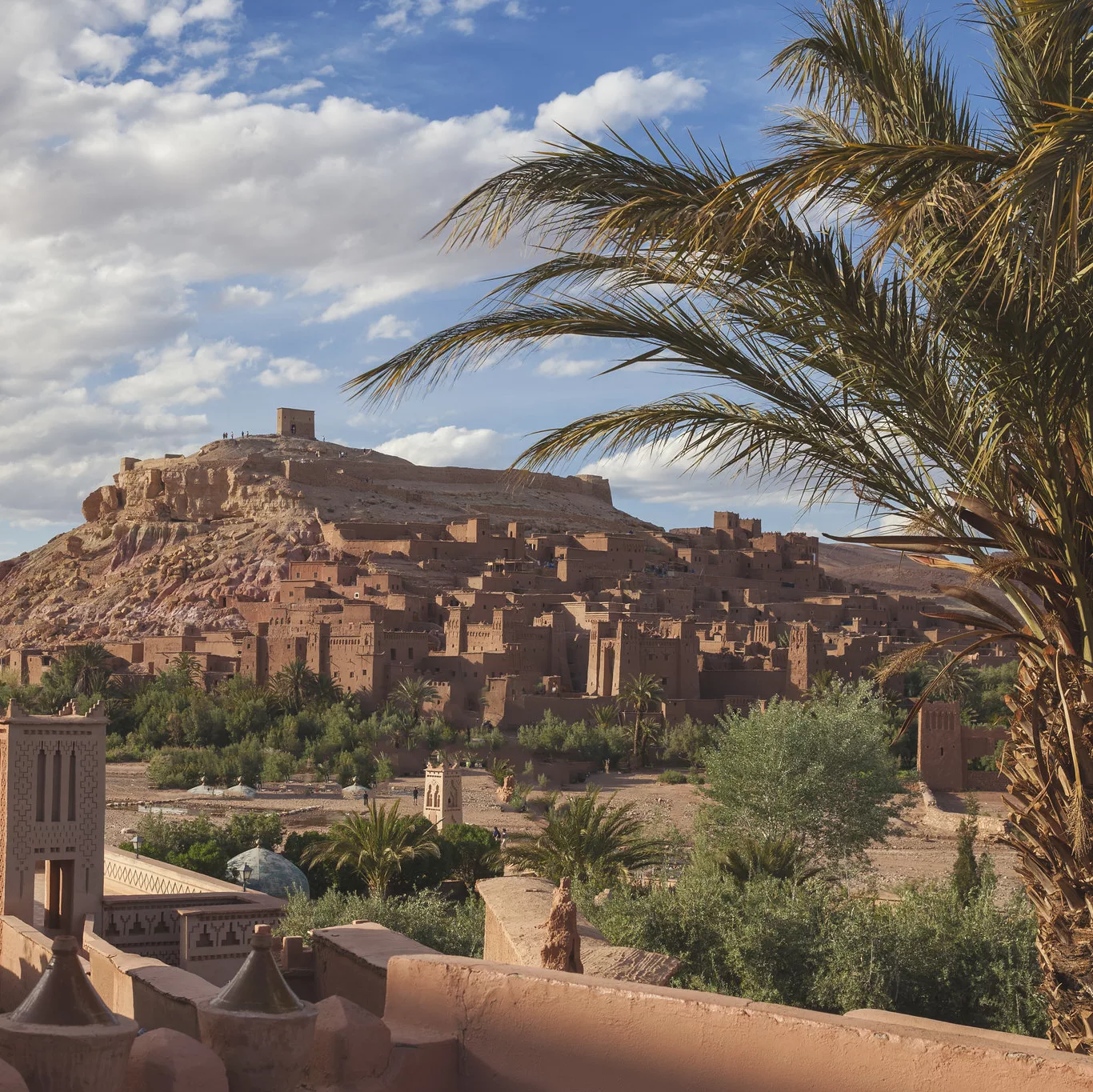
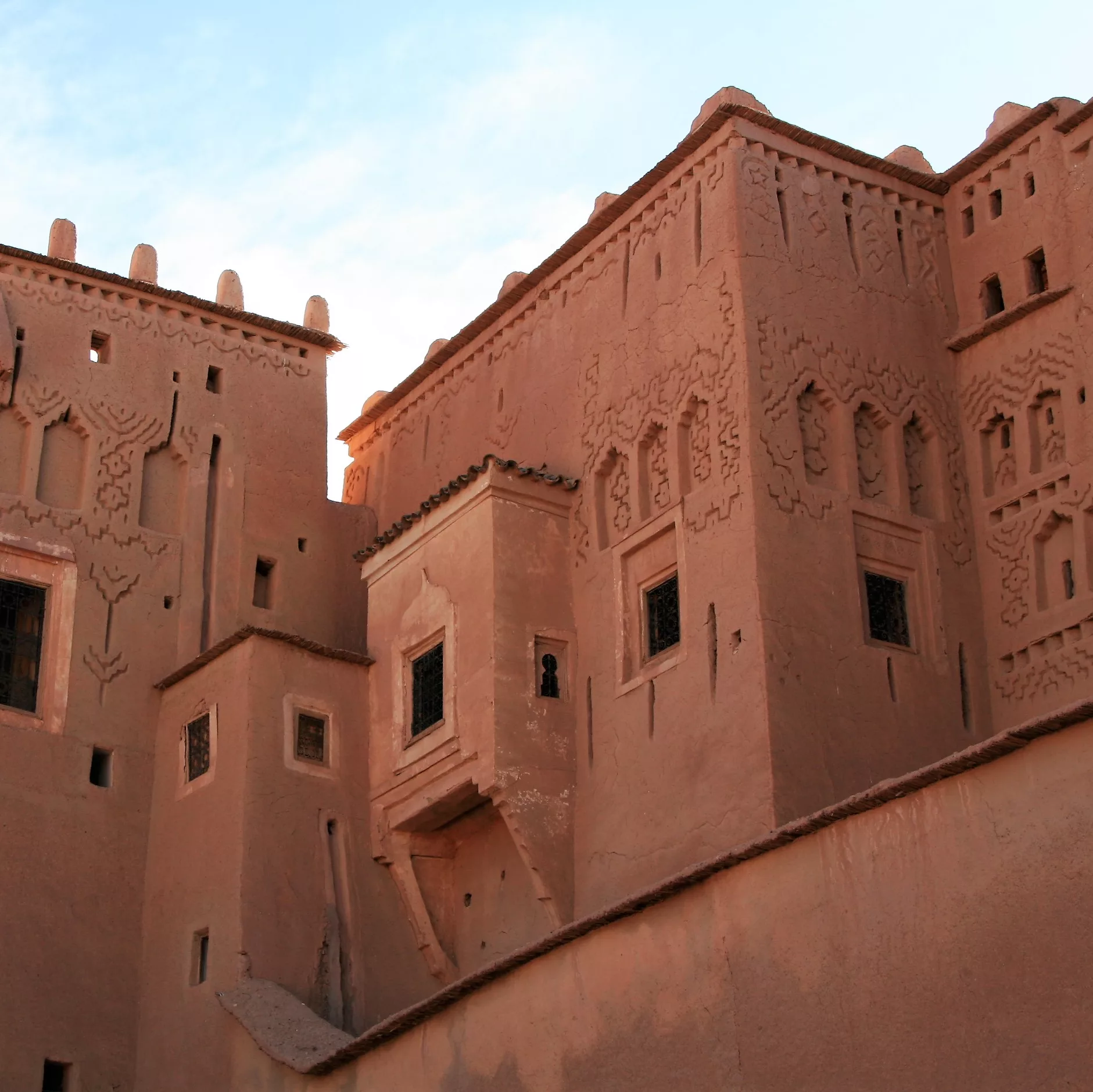
Day 7 – Camping in the desert at Erg Chigaga
Navigating animated medina is only part of why people want to go to Morocco, though. The country’s inescapable appeal is the one that comes from the dunes, and enthralling desert bivouacs.
Grand Taxi from Ouarzazate to M’Hamid: Takes 4,5 hours and costs 550 dhs/taxi
Leaving Ouarzazate behind, head to M’Hamid to take your desert exploration to another level. Contrarily to Erg Chebbi, which is conveniently accessible, venturing deep into the dunes of Erg Chigaga by camel requires a few days of travel through a rocky desert landscape. For this reason, 4×4 vehicles are usually the preferred way to reach this arid land.
Erg Chigaga is known for being off the beaten track compared to Erg Chebbi and Merzouga. Its towering dunes are less lofty, but the desert experience will assuredly feel more authentic. Panoramic views of the vast landscape and an unforgettable sunset await visitors who dare to make the journey.
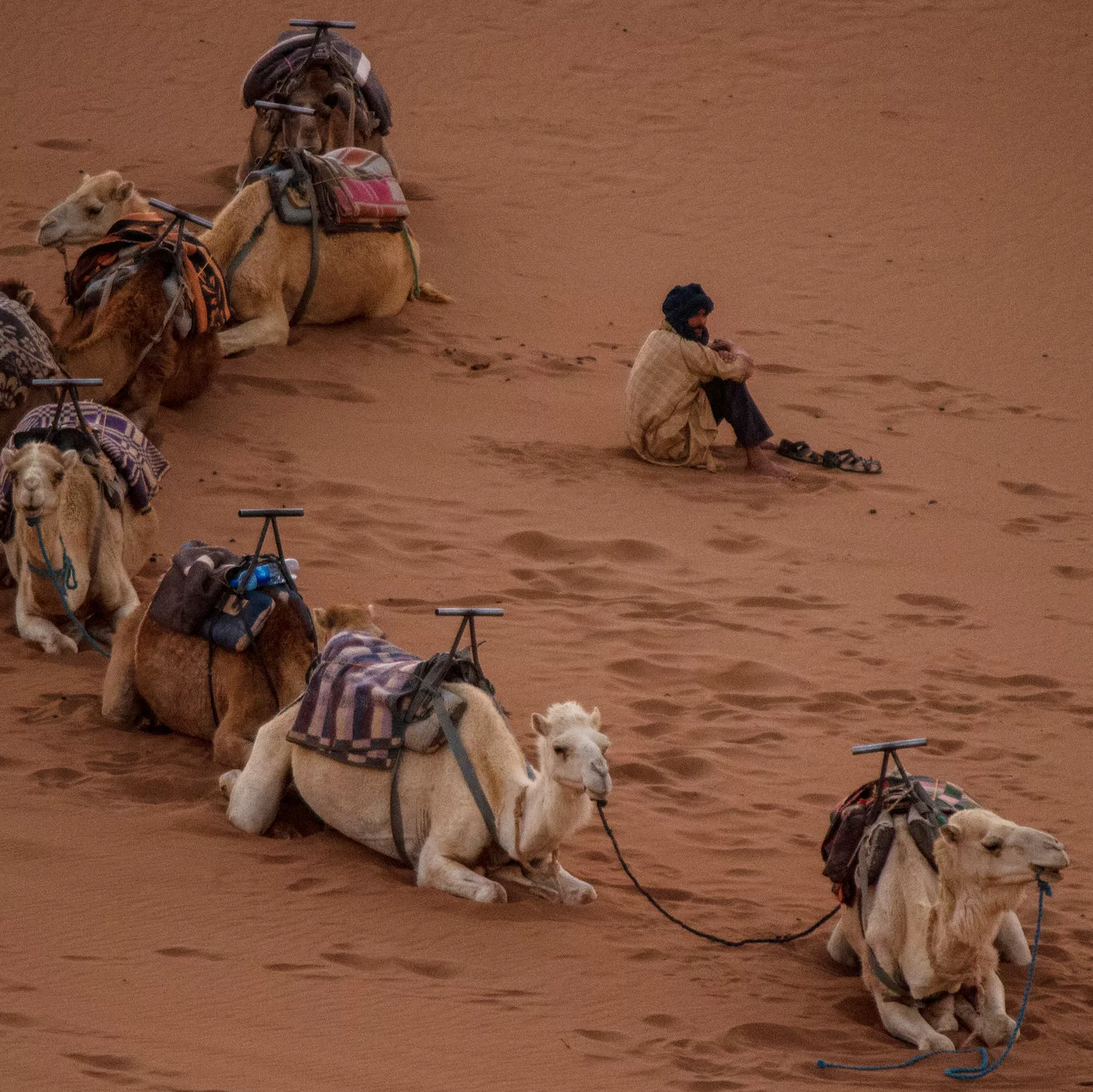

Sleeping under the stars in Erg Chigaga is a truly magical experience. The dazzling night sky, the cool desert breeze brushing across your tent, and the peaceful silence are only broken by an occasional distant howl of the mysterious wildlife inhabiting this hostile environment. The starry sky shines so brightly that it feels like you’re in a different world altogether. Waking up to the first light of dawn, you’ll be greeted with a sensational sunrise over the dunes, a sight that will stay with you long after you leave this remote dreamland.
Where to stay in Erg Chigaga
| TYPE | ACCOMMODATION | RATING | PRICE |
| Camping | Desert Bivouac | 5 / 5 | From € 33 / night |
Day 8 – Zagora
Grand Taxi from M’Hamid to Zagora: Takes 2 hours and costs 210 dhs/taxi
It’s time to head west to the Draa River valley and its desert haven, Zagora.
The small city is the perfect place to rest one last night before returning to the craziness of Marrakesh. For intrepid travellers who can’t stand the idea of relaxing for a day, the southeastern Moroccan city offers opportunities for hiking and biking in the surrounding desert and mountains. Those who want to unwind after their night in the desert will find what they are looking for in one of the many hammams in the region.
Things to do in Zagora
Visiting nearby Amezrou
The neighboring village of Amezrou is known for its traditional mud-brick architecture and Berber culture. Visitors can wander through the narrow streets and alleys, admiring the ornate doorways and intricate designs of the buildings. The village is surrounded by stunning natural scenery, including the lush greenery of the Draa Valley and the rugged mountains in the distance. Here, the term Oasis takes on its full meaning! Amezrou offers a glimpse into Morocco’s traditional way of life.
Climbing the Jebel Zagora
Rising up behind Amezrou, this small mountain offers sweeping views of the surrounding Dra Valley. The trail taking you up the mountain can be steep and rocky in places, and the trek is of moderate difficulty. You’ll pass through rugged canyons, towering rock formations, and lush oases on your way. They say that on a clear day you can even see as far as the Algerian border. The hike takes about 3 hours.
Seeing the “52-days to Timbuktu” sign
The “famous” sign in Zagora reminds us of the city’s instrumental role in trans-Saharian trade. It makes you feel the sheer remoteness of this location and its red rock landscapes.
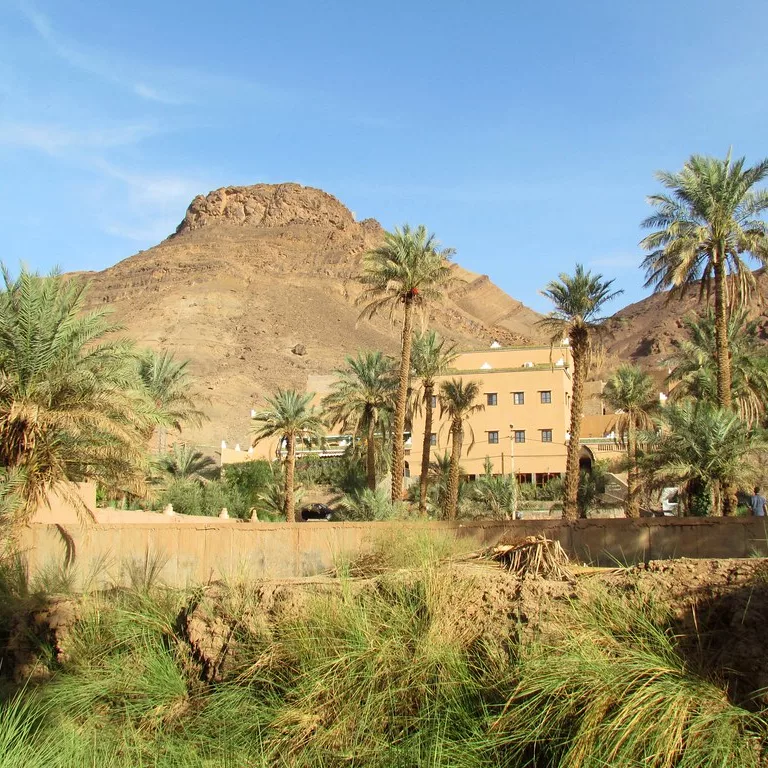
Image by Linda De Volder via Flickr
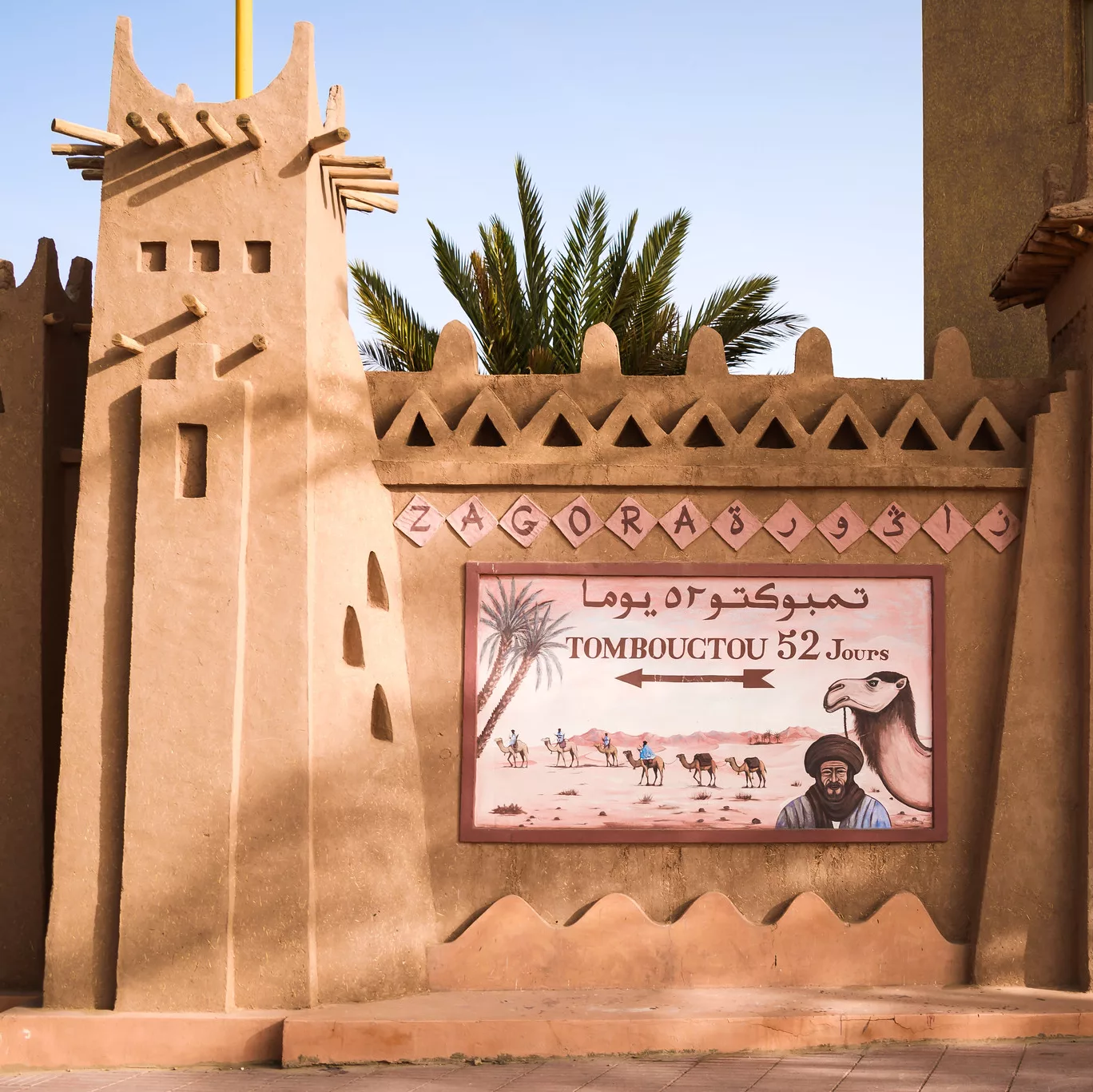
Image by Anthony Tong Lee via Flickr
Where to stay in Zagora
| TYPE | ACCOMMODATION | RATING | PRICE |
| Riad | Riad dar Sofian | 5 / 5 | From € 76 / night |
| Camping | Palmeraie d’Amezrou | 5 / 5 | From € 31 / night |
Day 9 and 10 – Marrakesh
Grand Taxi from Zagora to Marrakesh: Takes 10 hours and costs 100 dhs/person
After completing the long journey from Zagora to Marrakesh, there is no better way to end the trip than to return to the city we have navigated and dive even deeper inside.
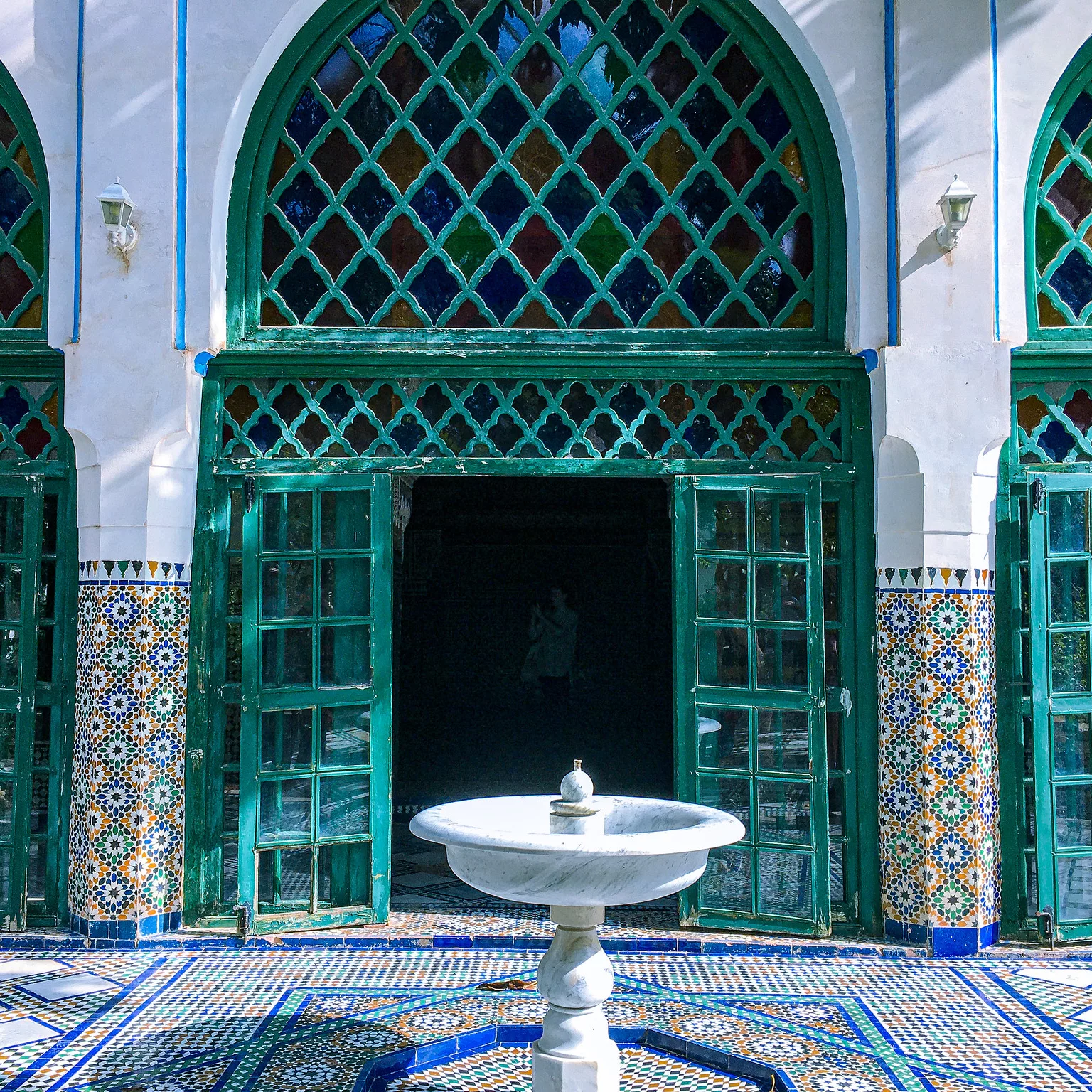
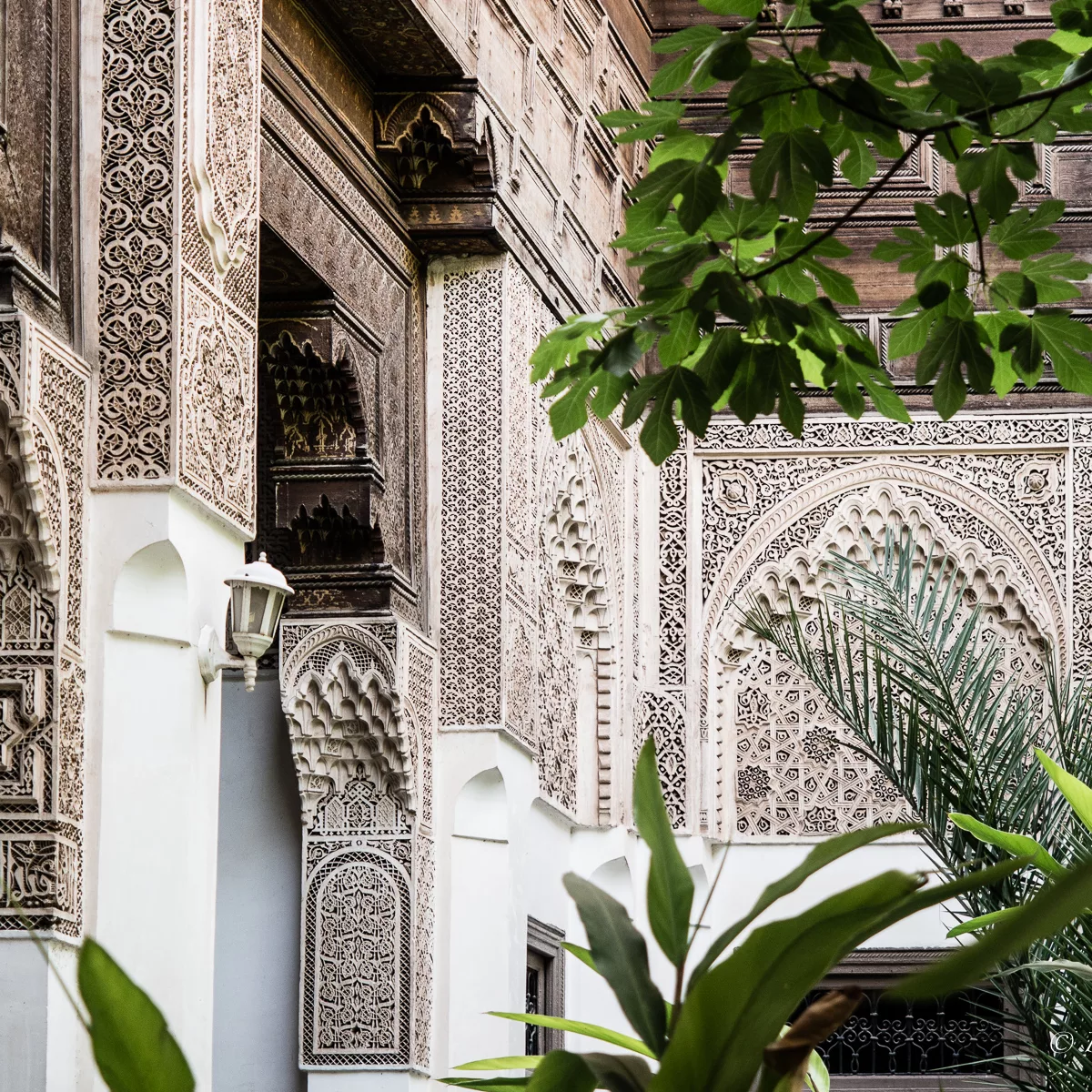
Things to do in Marrakesh
The exquisite Moroccan gardens in Jardin Majorelle
One of the must-visit attractions is the Jardin Majorelle, a stunning botanical garden that French painter Jacques Majorelle once owned. Visitors can stroll through the vibrant gardens, admiring the exotic plants and the striking blue architecture that are a signature of the garden’s design. Go early in the morning. It’s best to enjoy the colourful setting untroubled before the place becomes crowded.
The Bahia Palace
Glimpse the opulent lifestyle of the wealthy in 19th-century Morocco at the Bahia Palace. Only dating back to the mid-1800s, the palace holds an important place in recent history and is simply ravishing. The Bahia Palace’s intricate architecture, beautiful courtyards, and lush gardens will impress travellers but are better understood with the help of a guide.
Palmeraie
No visit to Marrakesh would be complete without a trip to the palm groves just outside the city. Like a last reminder of everything you did during the previous ten days, take a camel ride through the palm groves, admiring the beautiful scenery of the luscious desert landscape.

